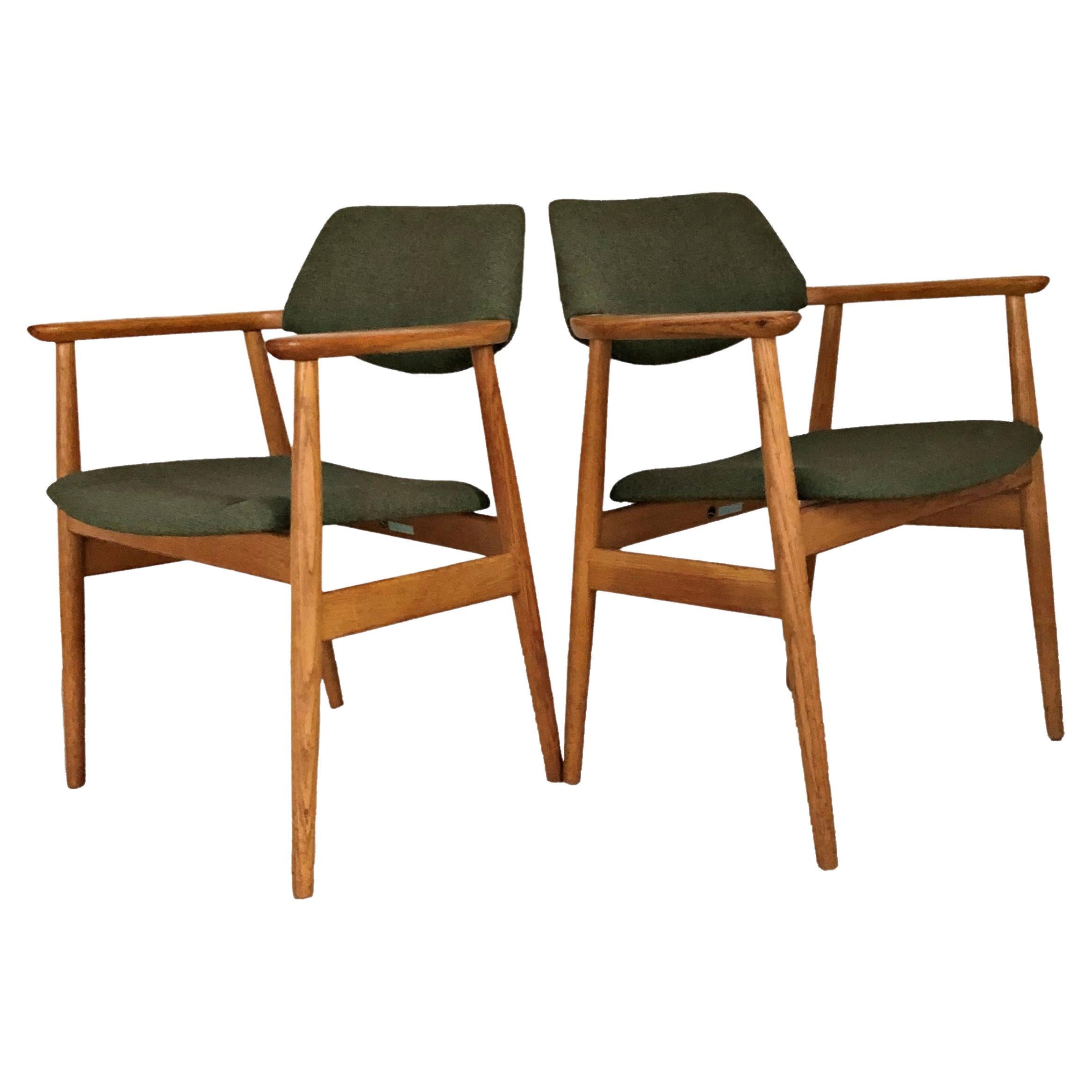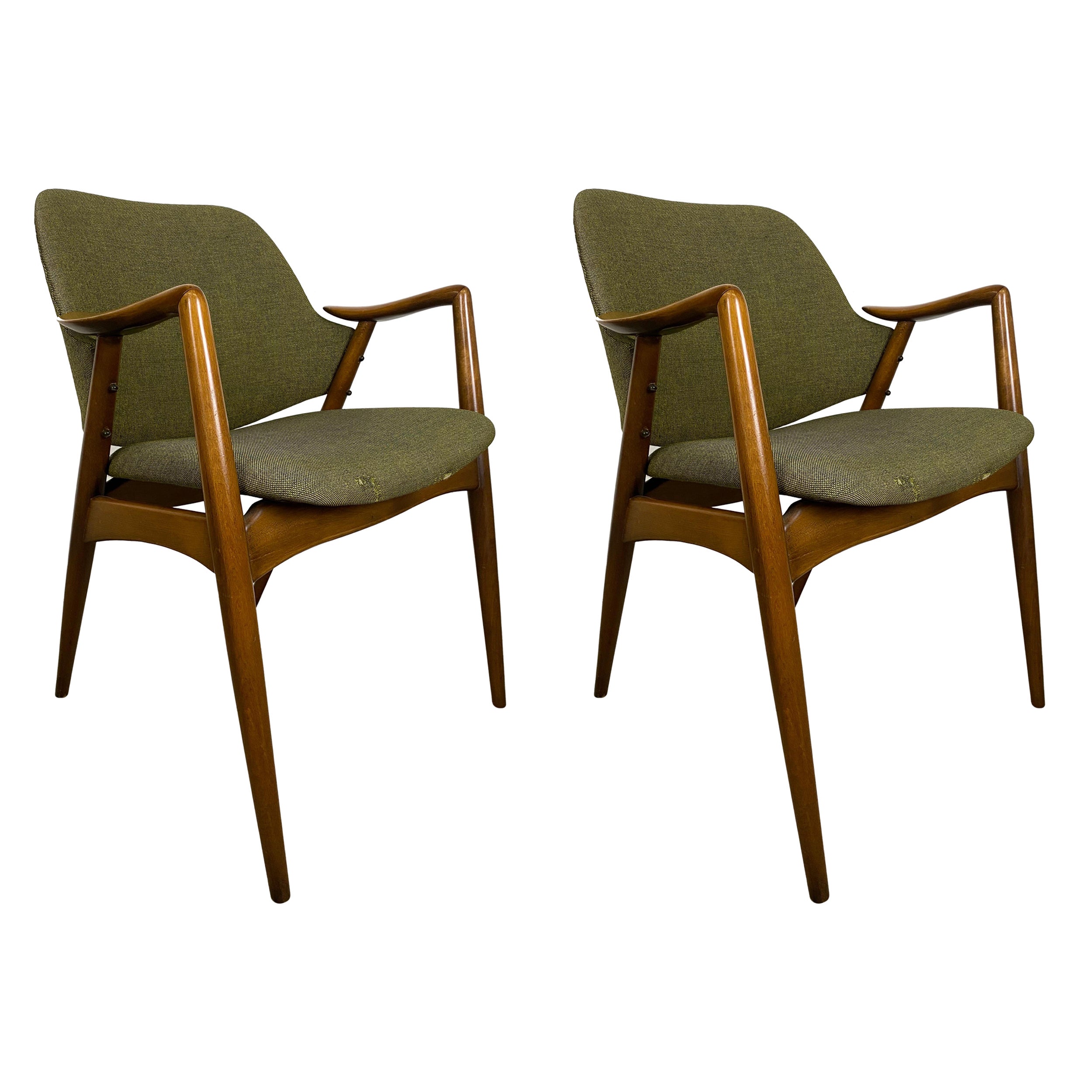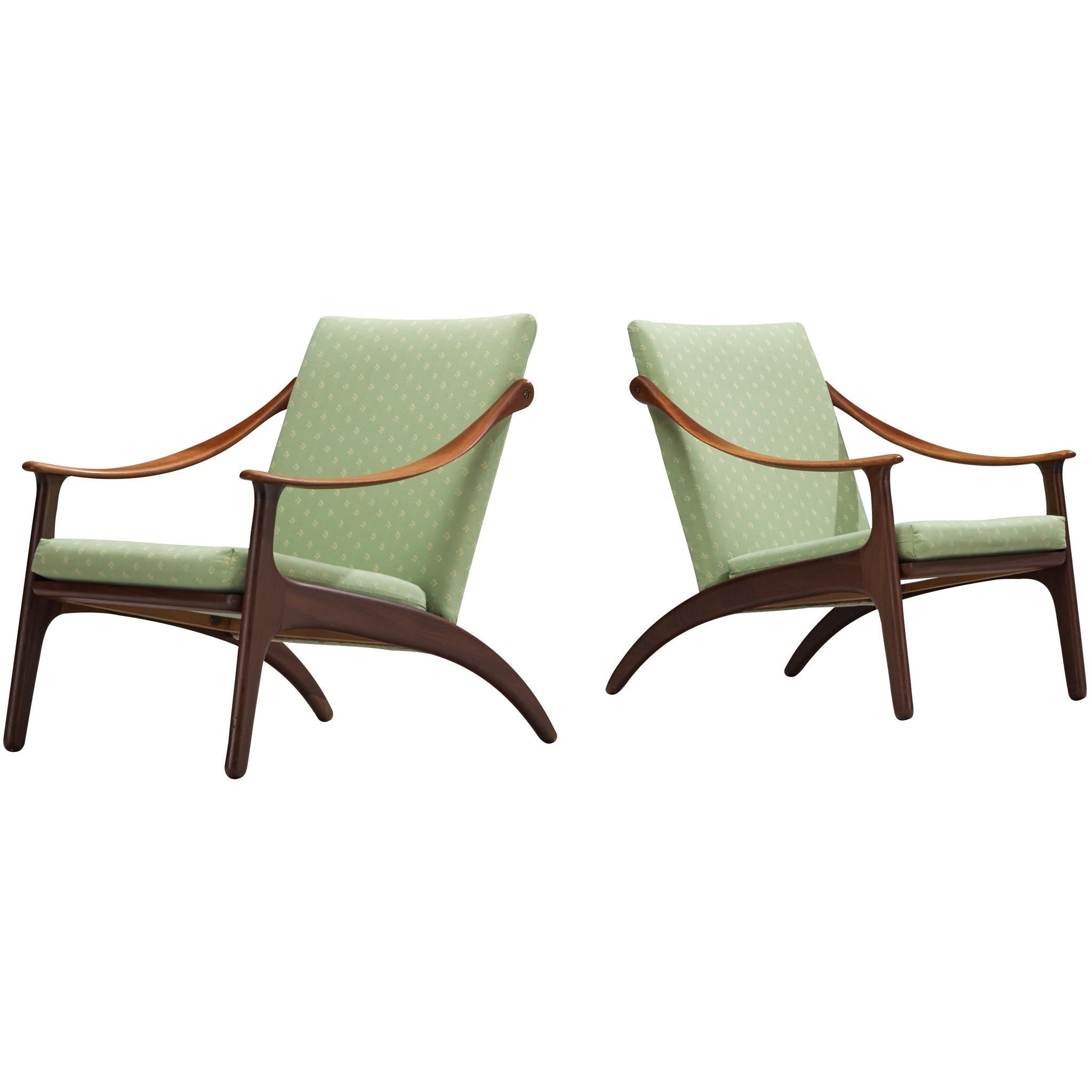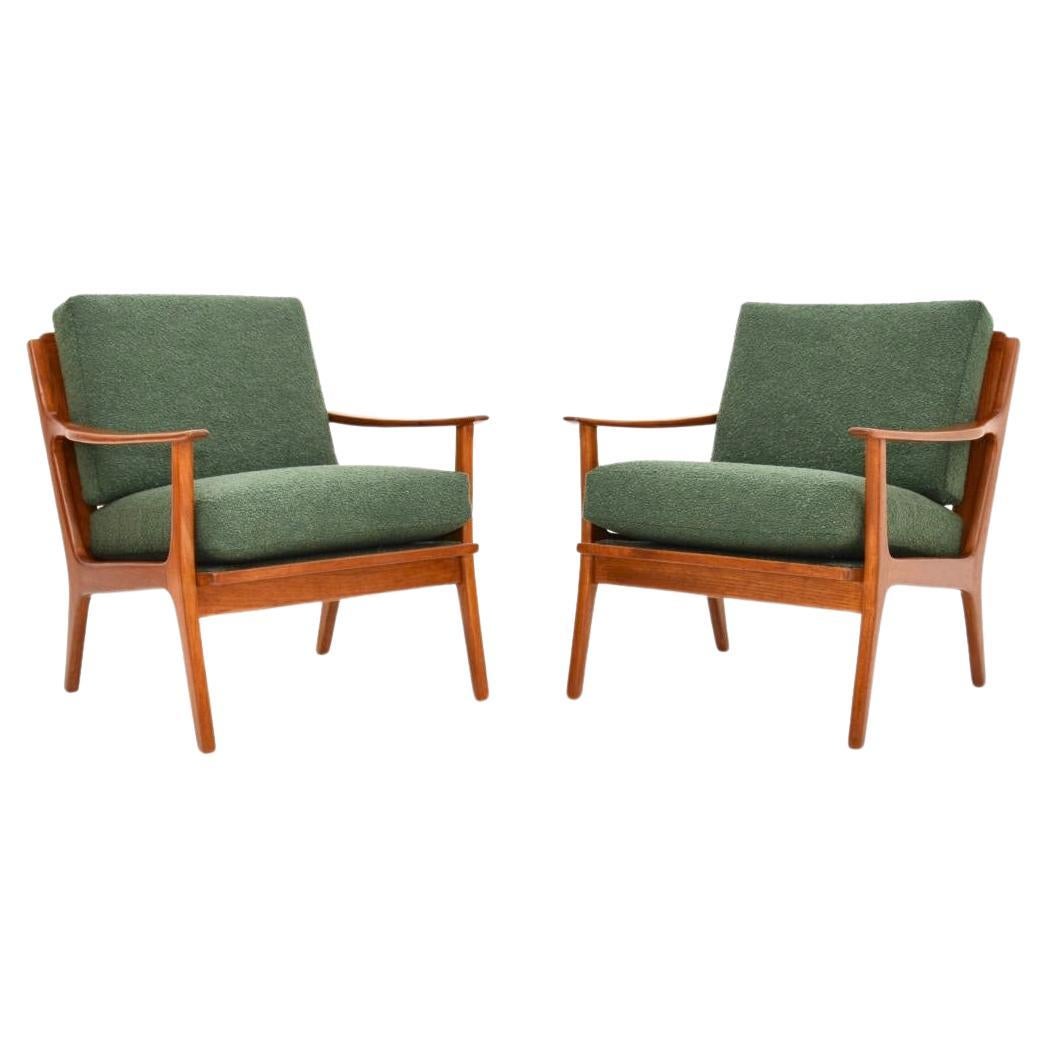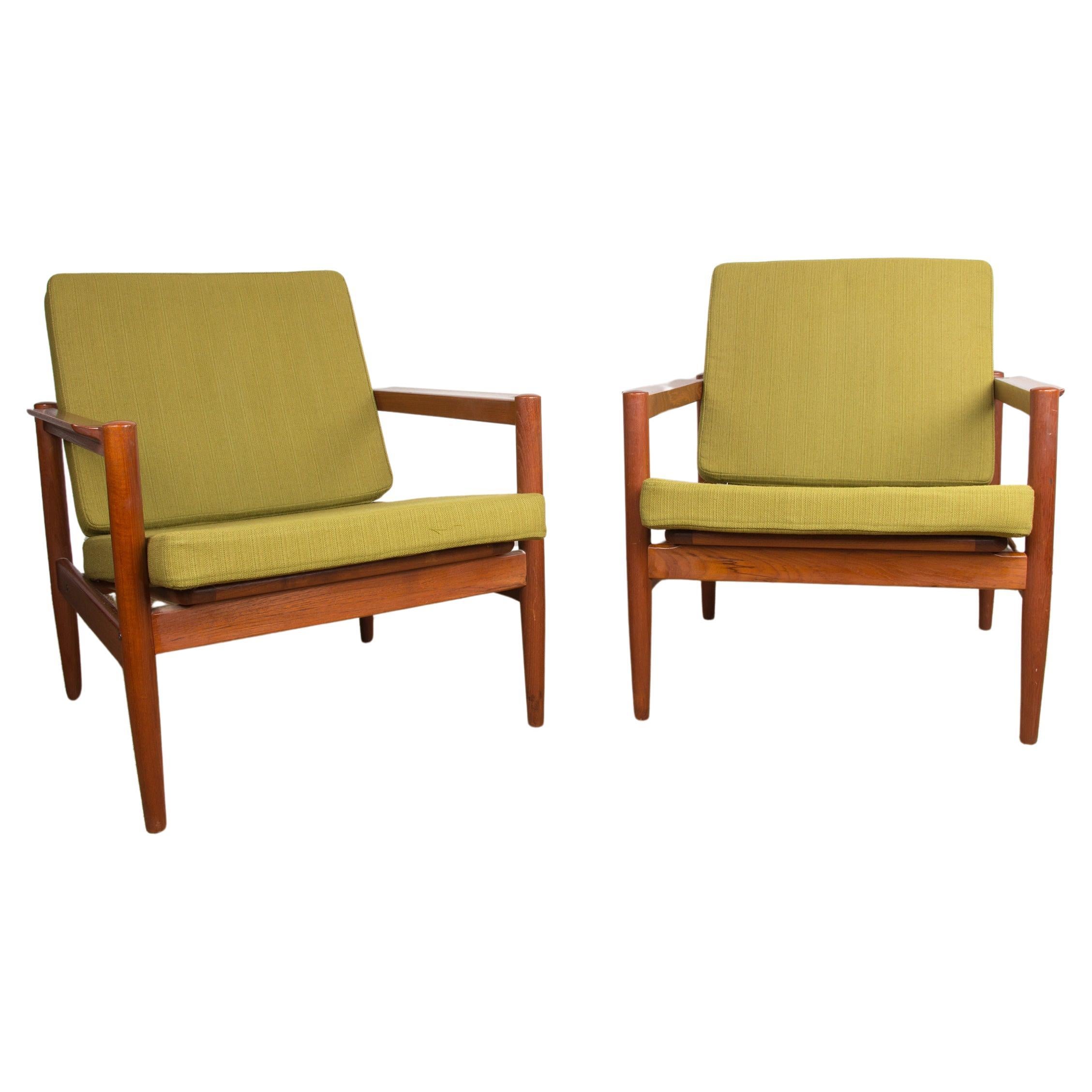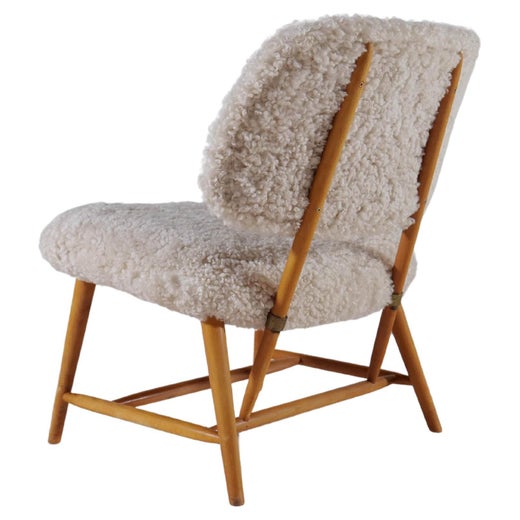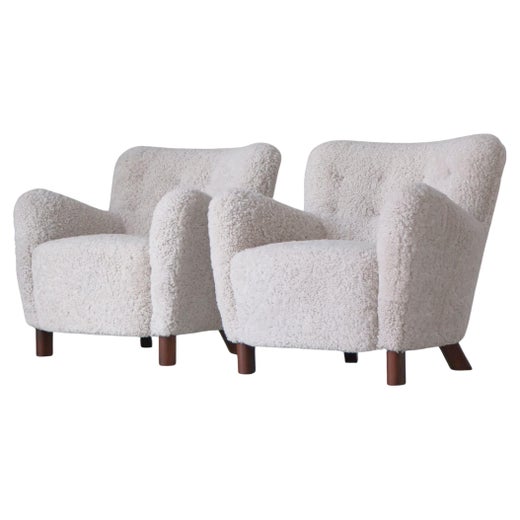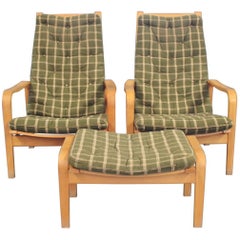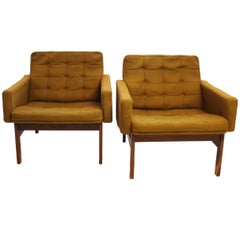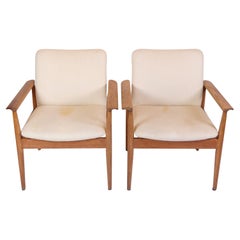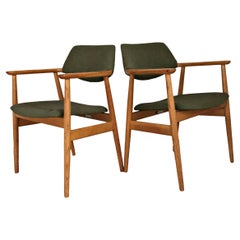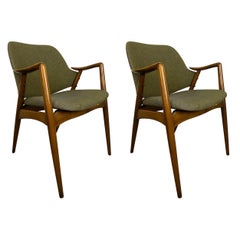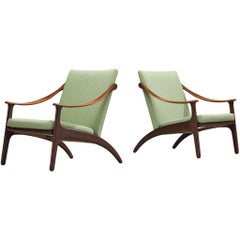Set Of 2 Armchairs With Stool Made In Teak & Green Fabric By Alf Svensson
About the Item
- Creator:Fritz Hansen (Manufacturer),Alf Svensson (Designer)
- Dimensions:Height: 39.38 in (100 cm)Width: 27.17 in (69 cm)Depth: 22.84 in (58 cm)Seat Height: 15.75 in (40 cm)
- Sold As:Set of 3
- Style:Mid-Century Modern (Of the Period)
- Materials and Techniques:
- Place of Origin:
- Period:
- Date of Manufacture:1960s
- Condition:Wear consistent with age and use.
- Seller Location:Lejre, DK
- Reference Number:1stDibs: LU1209241174532
Alf Svensson
Swedish architect and furniture designer Alf Svensson worked with a range of organic materials that are today commonly associated with Scandinavian modernism, utilizing rosewood, oak and teak in his cabinets, chairs, tables and other furniture, and opting for leather when it came to creating upholstery for his sleek seating. He worked for several manufacturers including String Seffle AB, Bergbom & Co., Nybrofabriken and Nesto but is best known to collectors for the designs he created for DUX.
As creative director at Bergboms, Svensson worked with brass and opaline glass to create a range of lighting. He designed sculptural tripod-style floor lamps with bodies of steam-bent solid teak — a popular material with furniture makers of the mid-20th century — while his hanging ceiling lights featured lacquered metal shades that bring pops of color into living rooms and entryways.
Svensson’s role at the lighting manufacturer, which was founded in 1940 by Efraim Ljung — also the founder of Ljungs Industrier — saw him collaborating with the likes of legendary designers such as Greta Magnusson Grossman and Edward Wormley, a favorite of mid-century modern furniture collectors and the longtime director of design for the Dunbar furniture company.
Svensson also served as the creative director at Ljungs Industrier. In Sweden, Studio Ljungs Industrier AB is the large family-owned parent company of Duxiana (in America, DUX). In 1950, Folke Ohlsson, then leading Ljungs Industrier’s design team, decamped to the States to explore how he could expand DUX’s business, which at that point included a wide range of furniture. It was during this time, in the postwar era, that American tastemakers really sold the citizenry on the warmth and good craftsmanship that characterizes Scandinavian modern design.
Ohlsson established a DUX office not long after he arrived in California, first in San Francisco and later in Burlingame. Svensson, a chief designer in the Malmö, Sweden, office of Ljungs Industrier, was among the top-tier furniture design talent with which DUX collaborated (a list that included Wormley and Bruno Mathsson). Svensson’s Galaxy chair, a comfortable upholstered swivel seat attributed to a partnership between the designer and Yngvar Sandström that exudes Space Age charm, is highly sought after, and Svensson's relationship with DUX yielded similarly attractive sideboards, lounge chairs and other furnishings that are some of his most celebrated works.
Find vintage Alf Svensson furniture on 1stDibs.
Fritz Hansen
When the Copenhagen-based furniture maker Fritz Hansen opened for business more than 140 years ago, the company — which today styles itself The Republic of Fritz Hansen — adhered to the traditional, time-honored Danish values of craftsmanship in woodworking and joinery. Yet thanks to the postwar innovations of Arne Jacobsen and others, Fritz Hansen would become the country’s leader in Scandinavian modern design using new, forward-looking materials and methods.
Fritz Hansen started his company in 1872, specializing in the manufacture of small furniture parts. In 1915, the firm became the first in Denmark to make chairs using steam-bent wood (a technique most familiar from birch used in the ubiquitous café chairs by Austrian maker Thonet). At the time, Fritz Hansen was best known for seating that featured curved legs and curlicue splats and referenced 18th-century Chippendale designs.
In the next few decades, the company promoted simple, plain chairs with slatted backs and cane or rush seats designed by such proto-modernist masters as Kaare Klint and Søren Hansen. Still, the most aesthetically striking piece Fritz Hansen produced in the first half of the 20th century was arguably the China chair of 1944 by Hans Wegner — and that piece, with its yoke-shaped bentwood back- and armrest, was based on seating manufactured in China during the Ming dynasty. (Wegner was moved by portraits he’d seen of Danish merchants in the Chinese chairs.)
Everything changed in 1952 with Arne Jacobsen’s Ant chair. The collaboration between the architect and Fritz Hansen officially originated in 1934 — that year, Jacobsen created his inaugural piece for the manufacturer, the solid beechwood Bellevue chair for a restaurant commission. The Ant chair, however, was the breakthrough.
With assistance from his then-apprentice Verner Panton, Jacobsen designed the Ant chair for the cafeteria of a Danish healthcare company called Novo Nordisk. The chair was composed of a seat and backrest formed from a single piece of molded plywood attached, in its original iteration, to three tubular metal legs. Its silhouette suggests the shape of the insect’s body, and the lightweight, stackable chair and its biomorphic form became an international hit.
Jacobsen followed with more plywood successes, such as the Grand Prix chair of 1957. The following year he designed the SAS Royal Hotel in Copenhagen and its furnishings, including the Egg chair and the Swan chair. Those two upholstered pieces, with their lush, organic frames made of fiberglass-reinforced polyurethane, have become the two chairs most emblematic of mid-20th-century cool. Moreover, the Egg and Swan led Fritz Hansen to fully embrace new man-made materials, like foam, plastic and steel wire used to realize the avant-garde creations of later generations of designers with whom the firm collaborated, such as Piet Hein, Jørn Utzon (the architect of the Sydney Opera House) and Verner Panton. If the Fritz Hansen of 1872 would not now recognize his company, today’s connoisseurs certainly do.
Find a collection of vintage Fritz Hansen tables, lounge chairs, sofas and other furniture on 1stDibs.
- ShippingRetrieving quote...Shipping from: Lejre, Denmark
- Return Policy
More From This Seller
View AllVintage 1960s Swedish Mid-Century Modern Armchairs
Teak, Fabric
Vintage 1980s Danish Mid-Century Modern Armchairs
Fabric, Beech
Vintage 1960s Danish Mid-Century Modern Armchairs
Fabric, Rosewood
Vintage 1960s Danish Mid-Century Modern Armchairs
Wool, Teak
Vintage 1970s Danish Mid-Century Modern Armchairs
Wool, Oak
Vintage 1960s Danish Scandinavian Modern Armchairs
Fabric, Teak
You May Also Like
Vintage 1950s Danish Scandinavian Modern Armchairs
Oak
Vintage 1950s Swedish Mid-Century Modern Armchairs
Upholstery, Beech
Vintage 1950s Danish Scandinavian Modern Lounge Chairs
Fabric, Teak
Vintage 1960s Danish Mid-Century Modern Armchairs
Teak, Bouclé
Vintage 1960s Danish Scandinavian Modern Armchairs
Fabric, Teak
20th Century Polish Mid-Century Modern Armchairs
Textile, Beech
